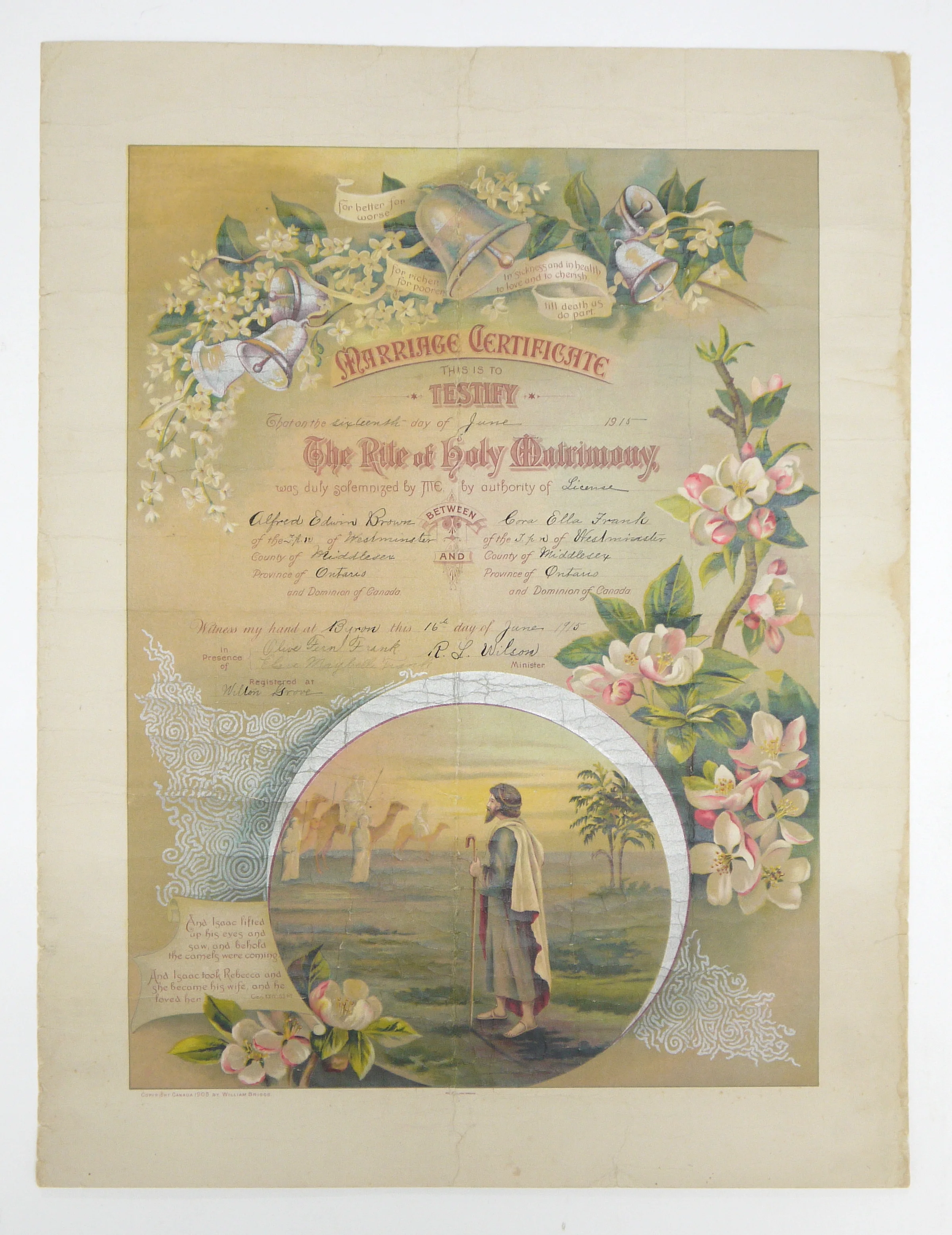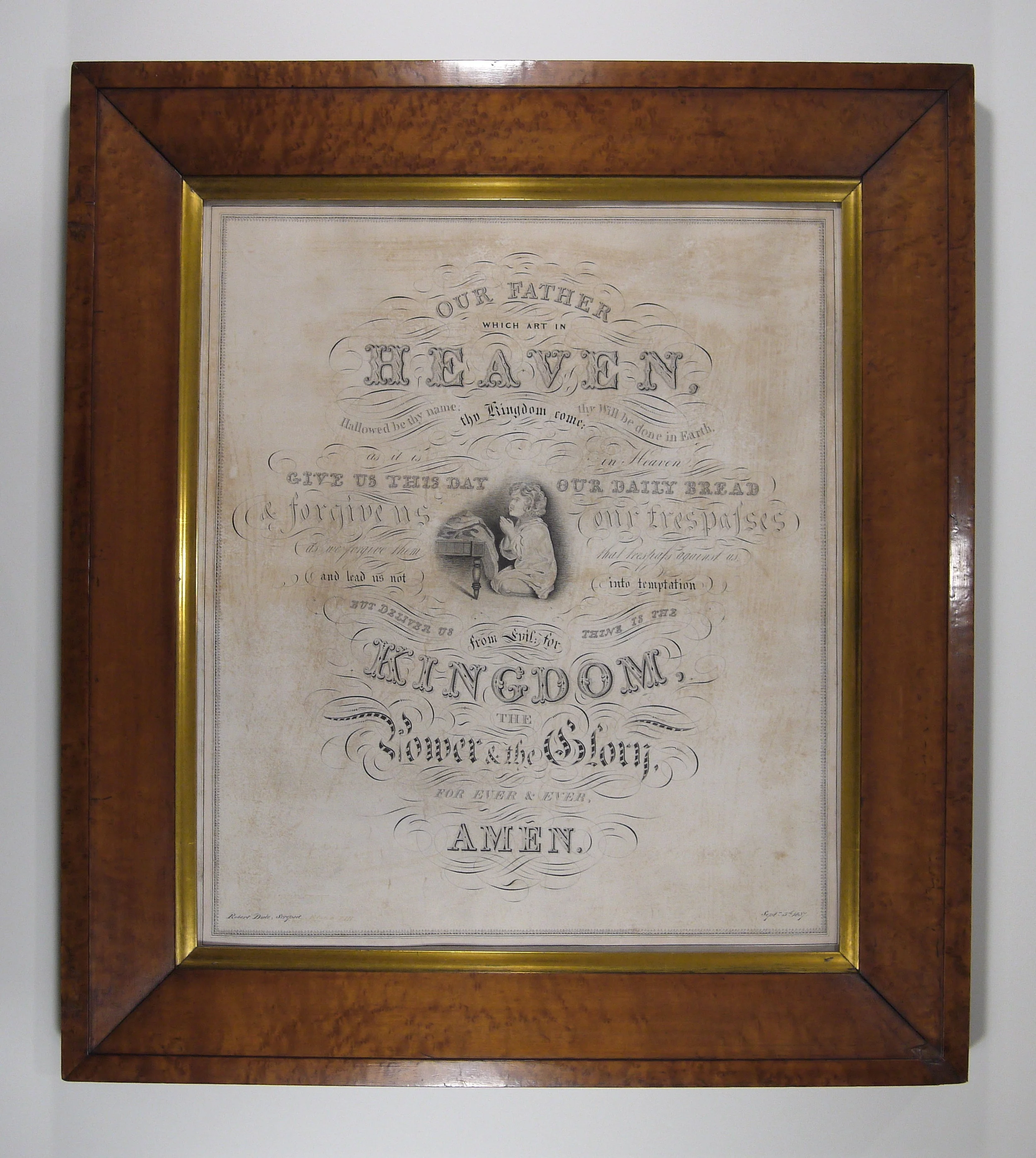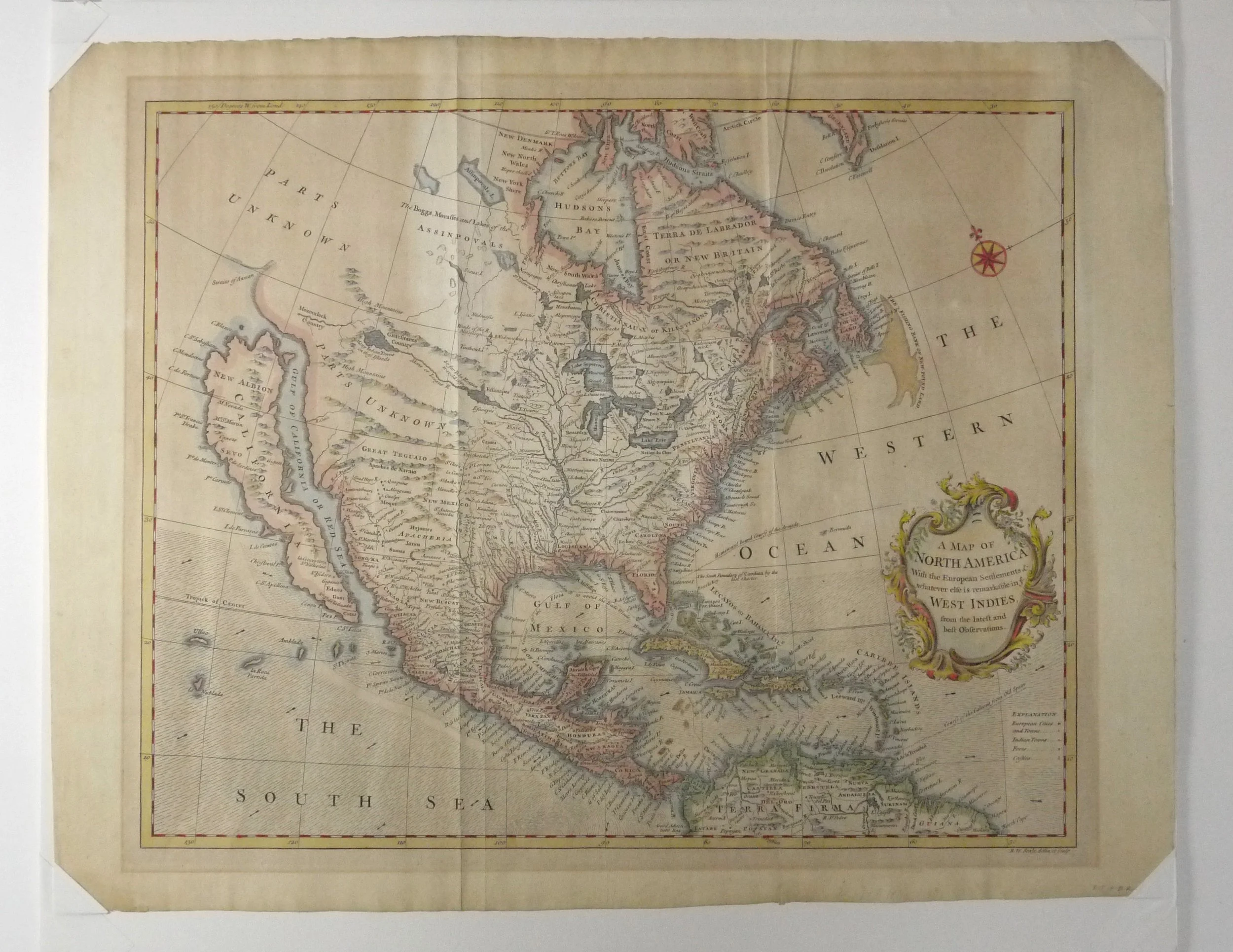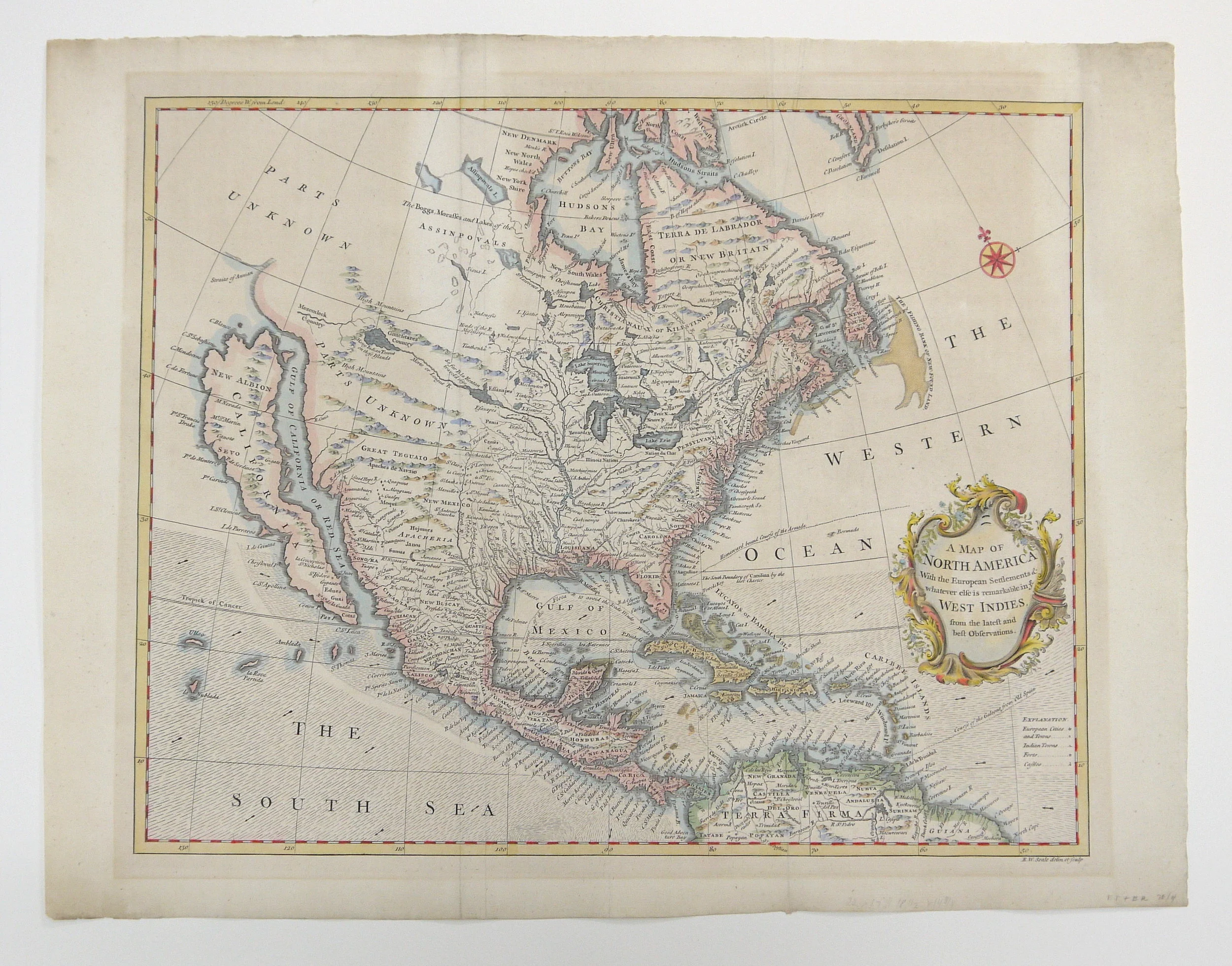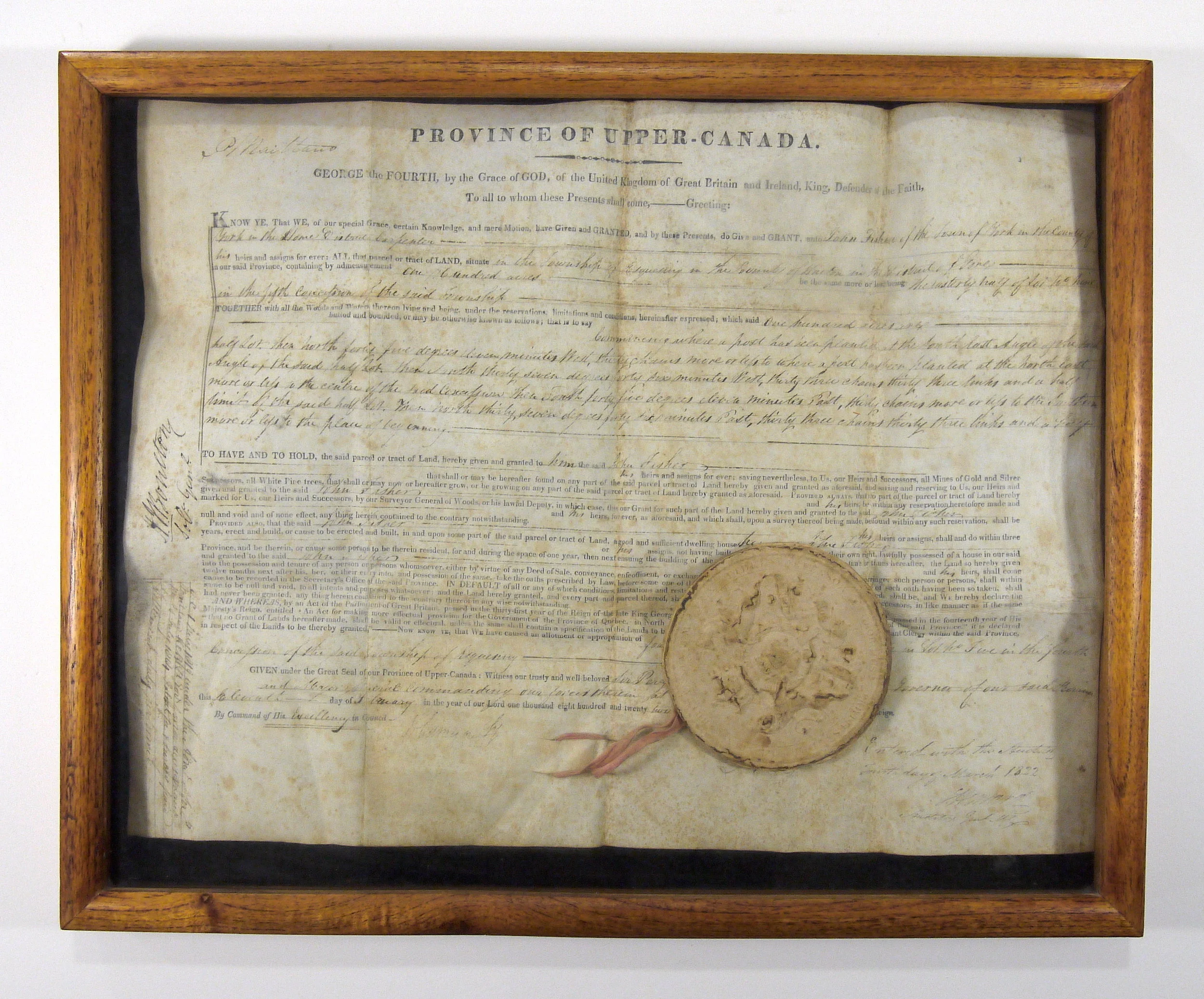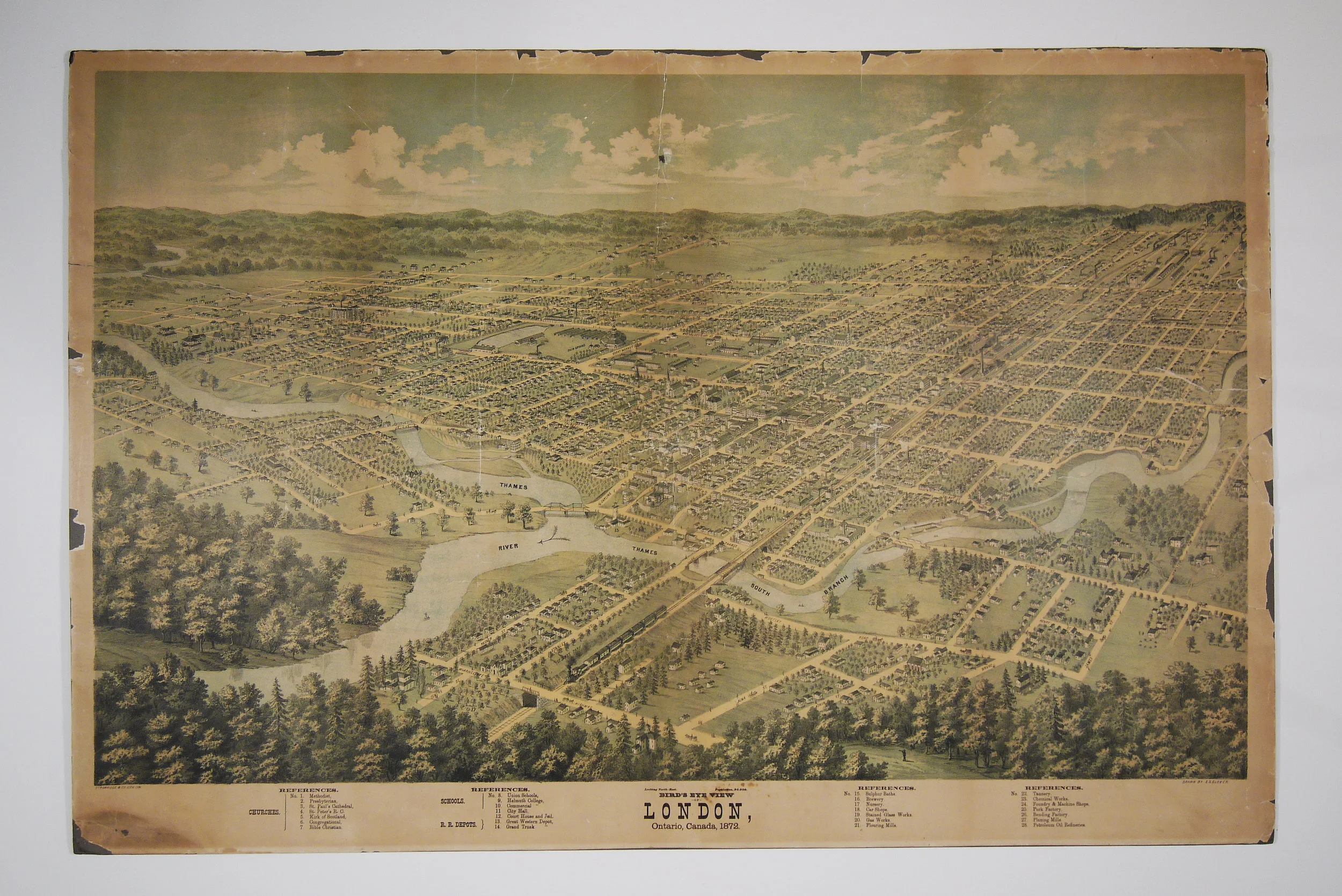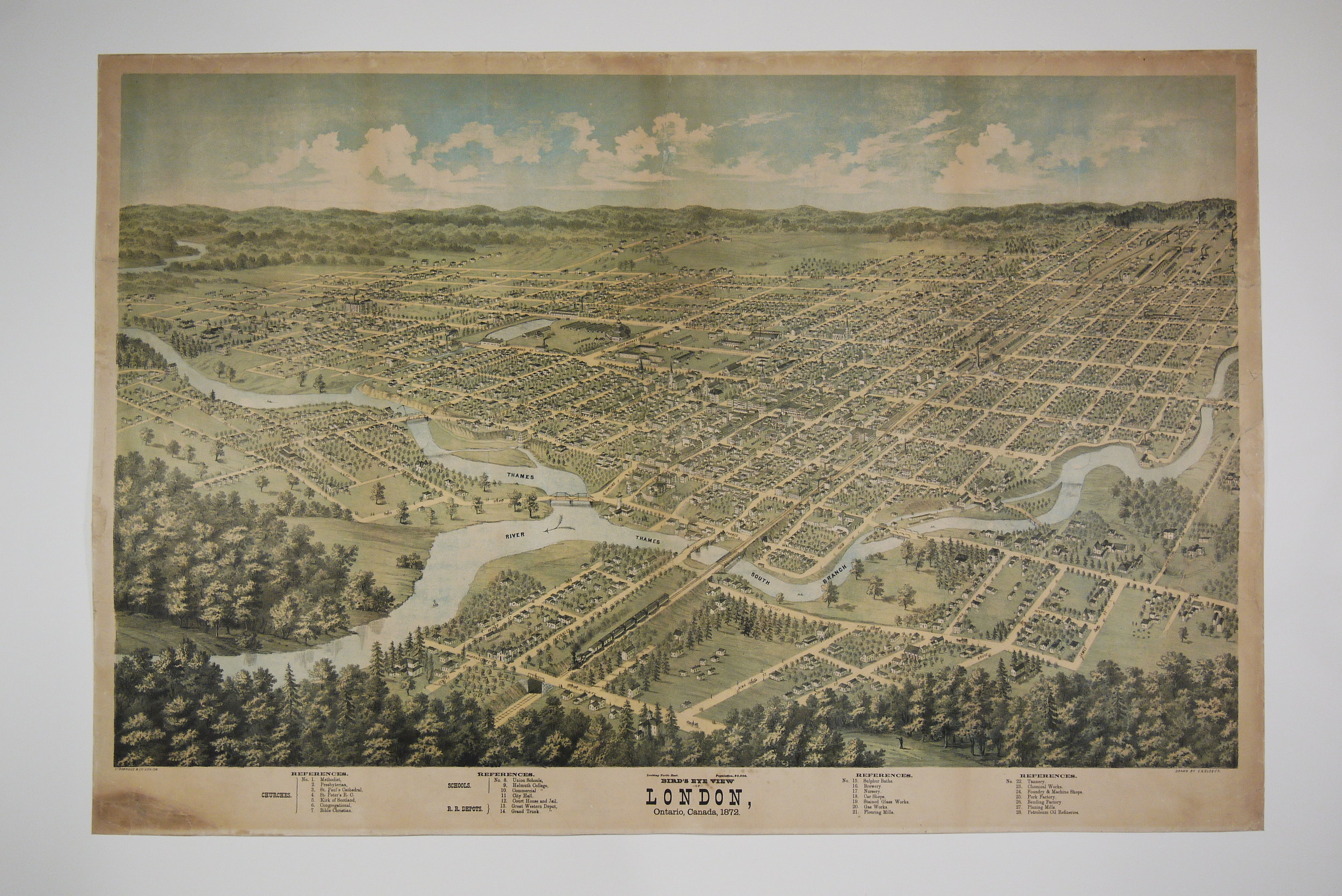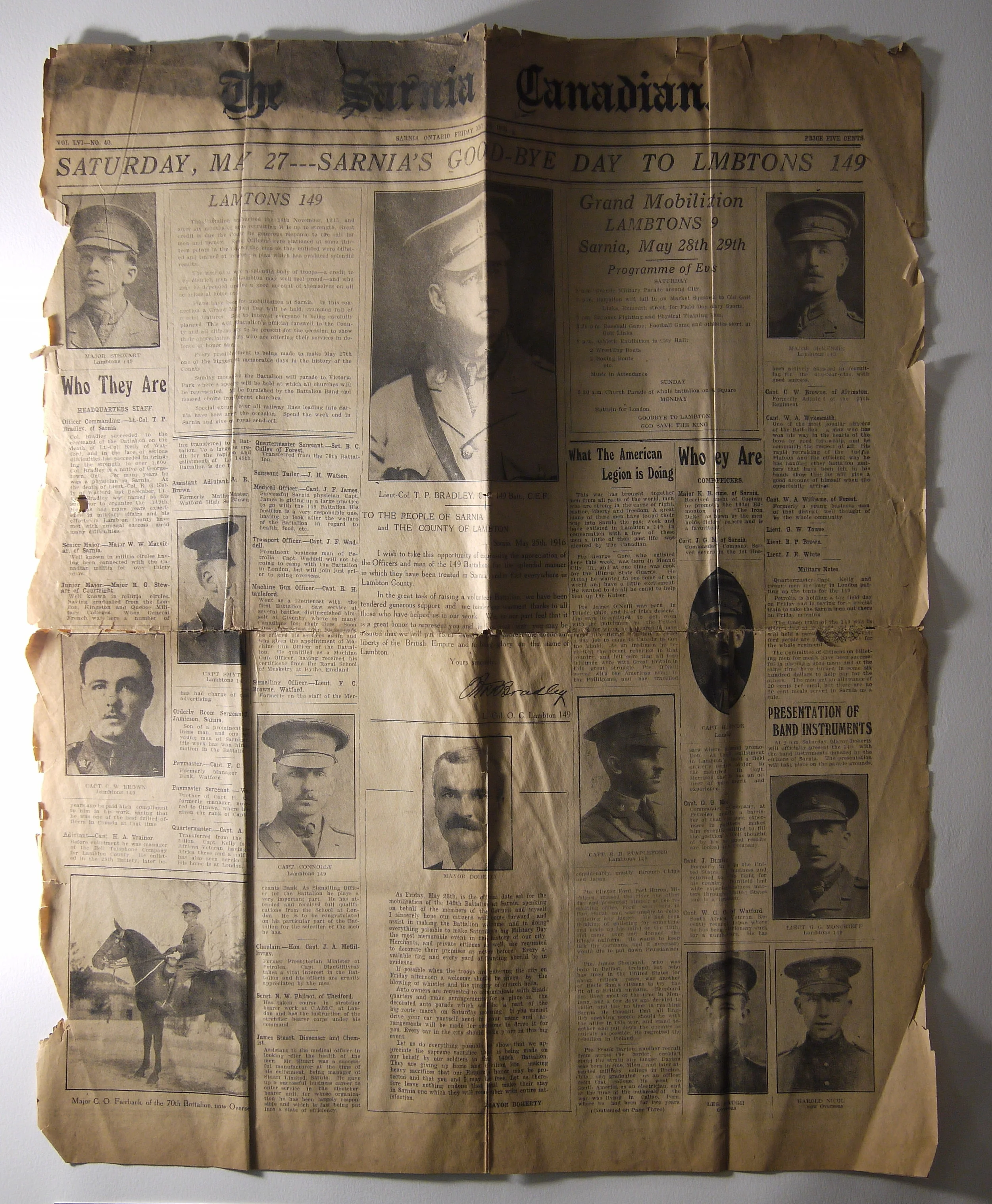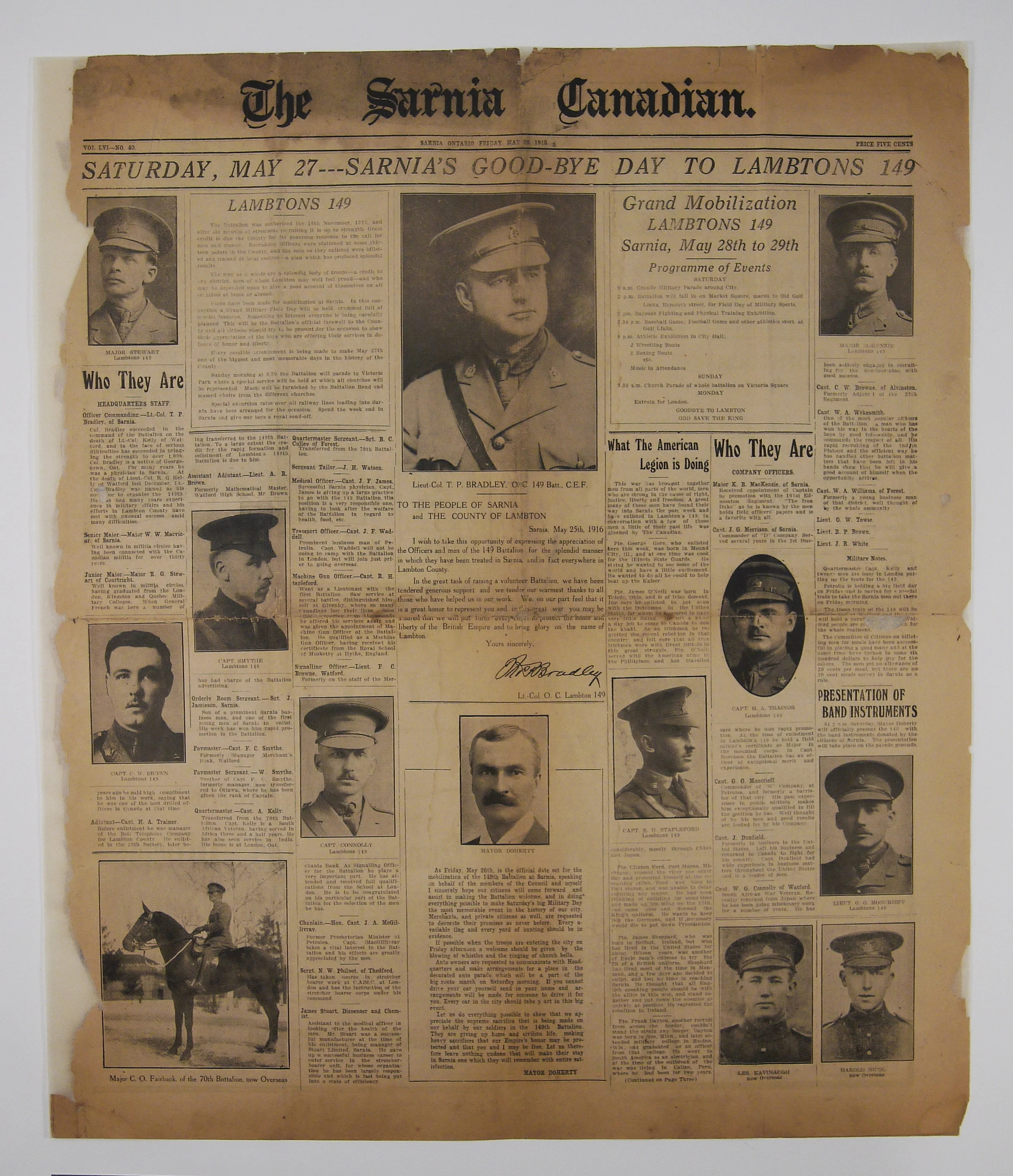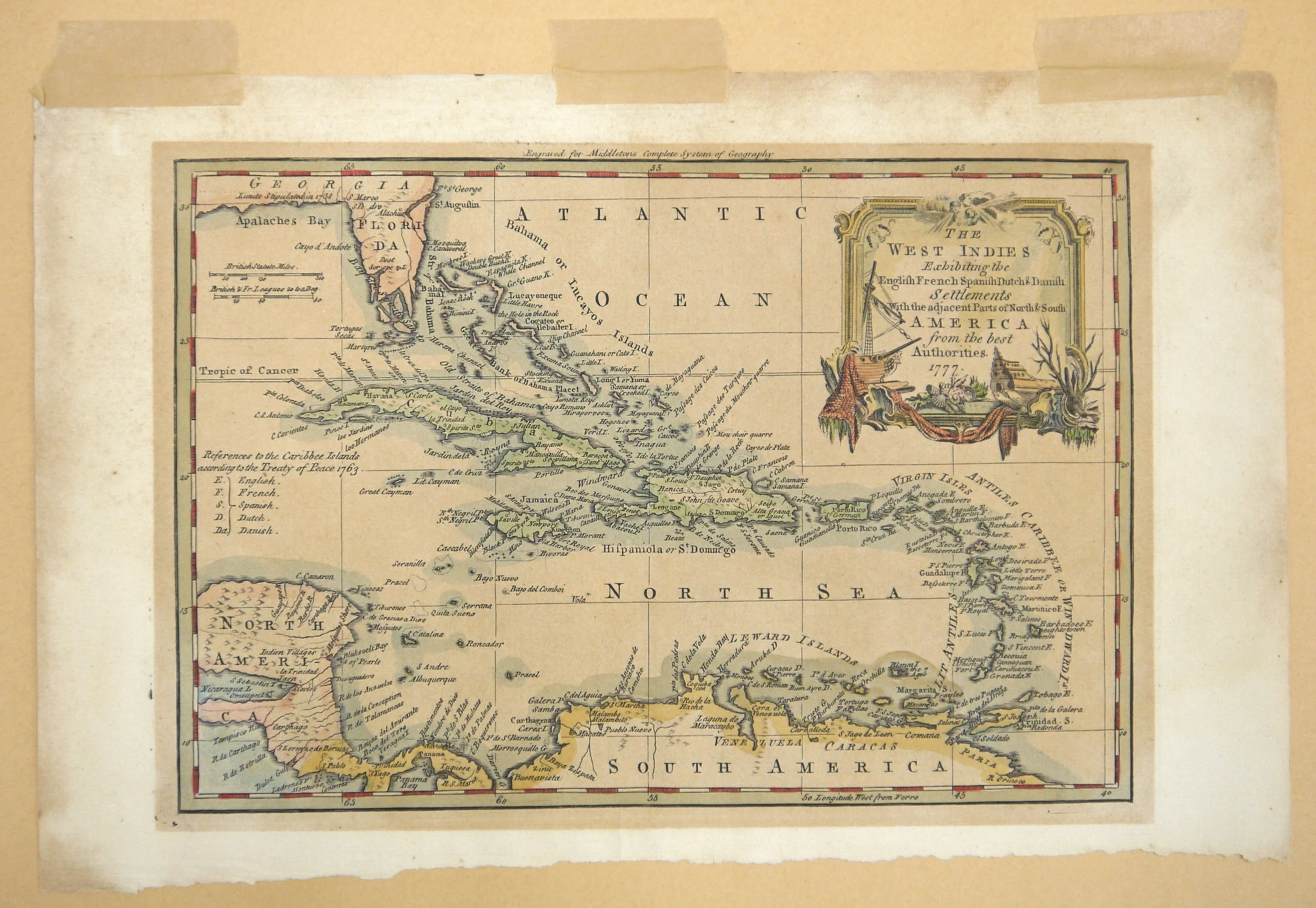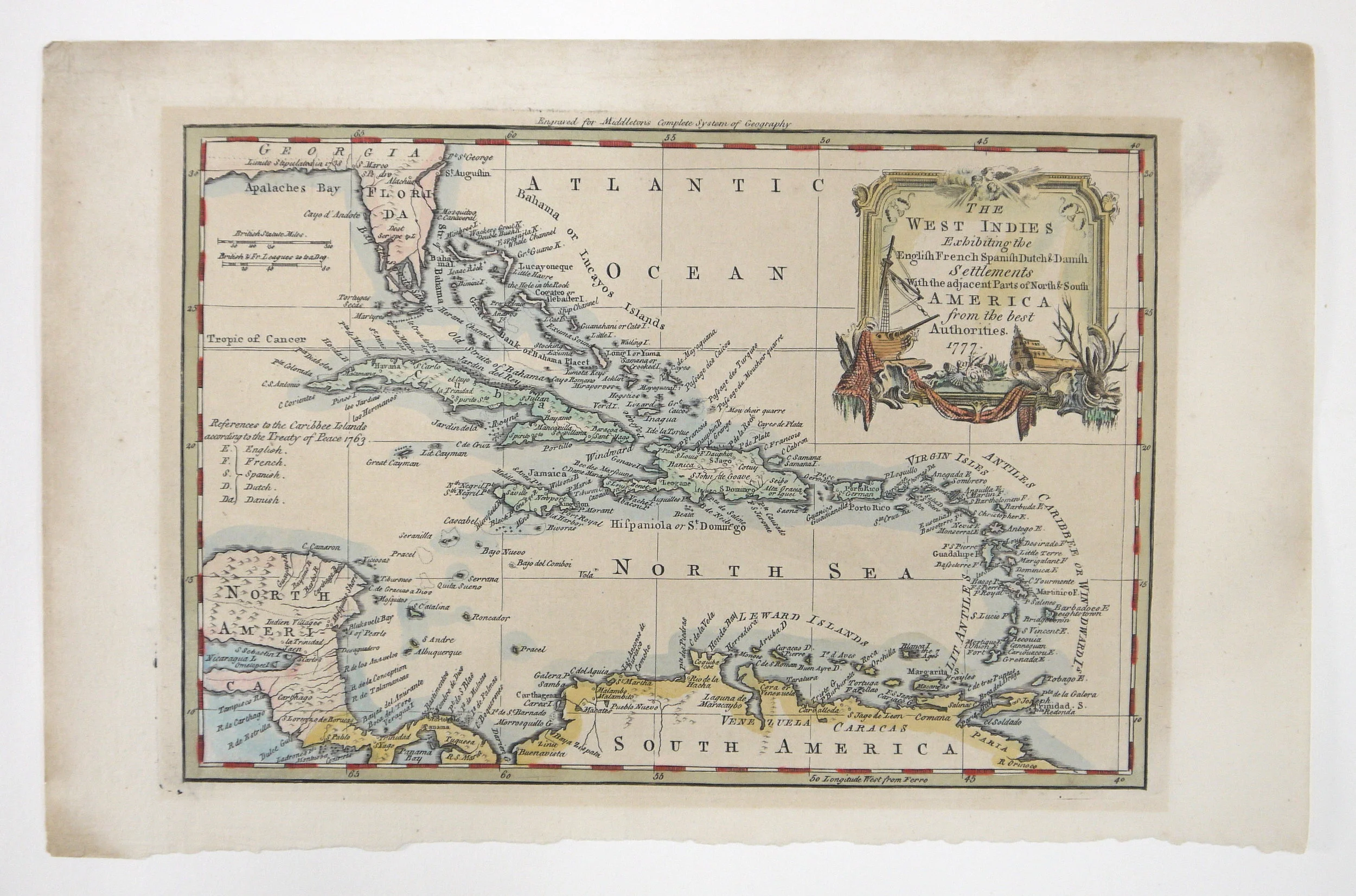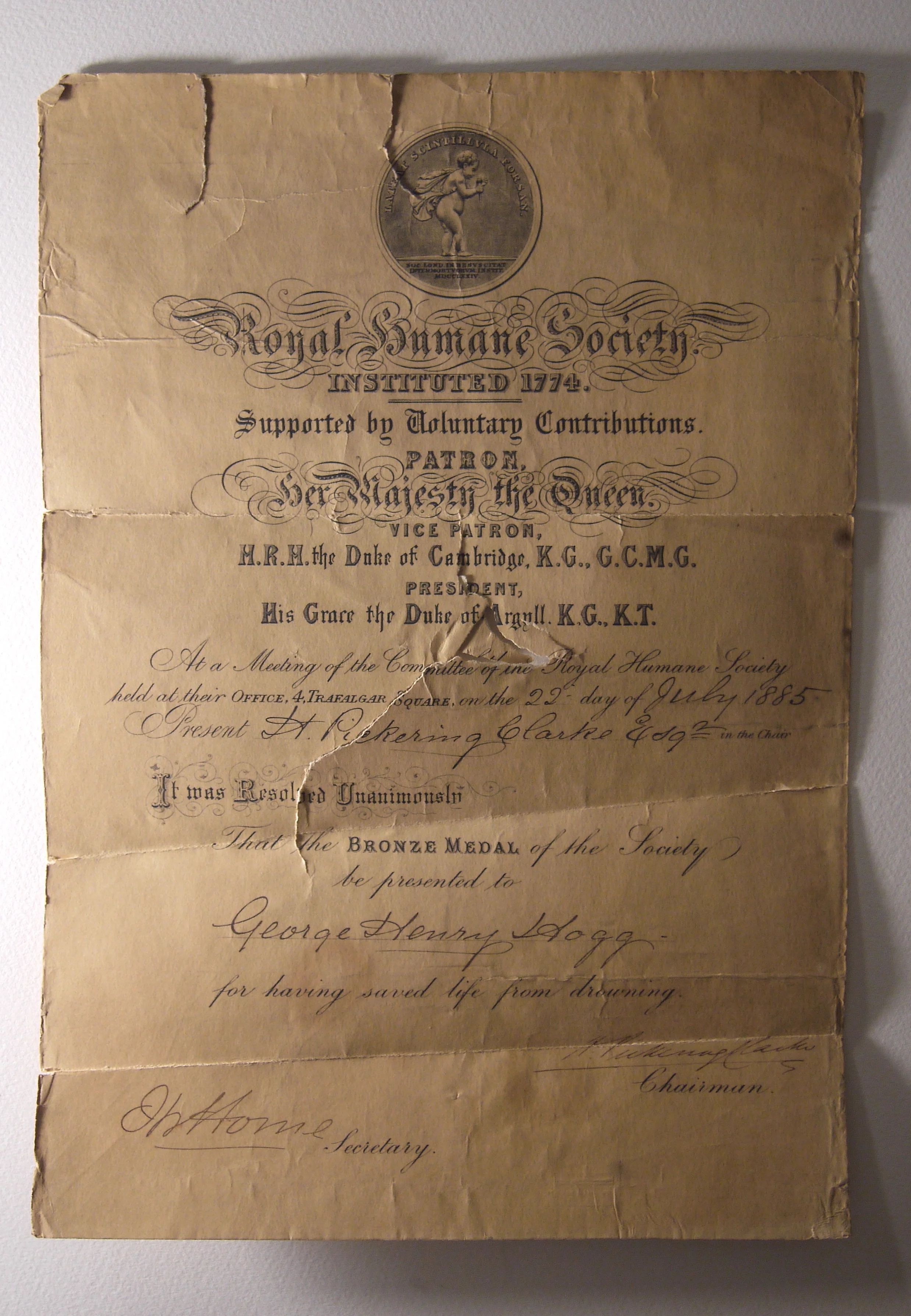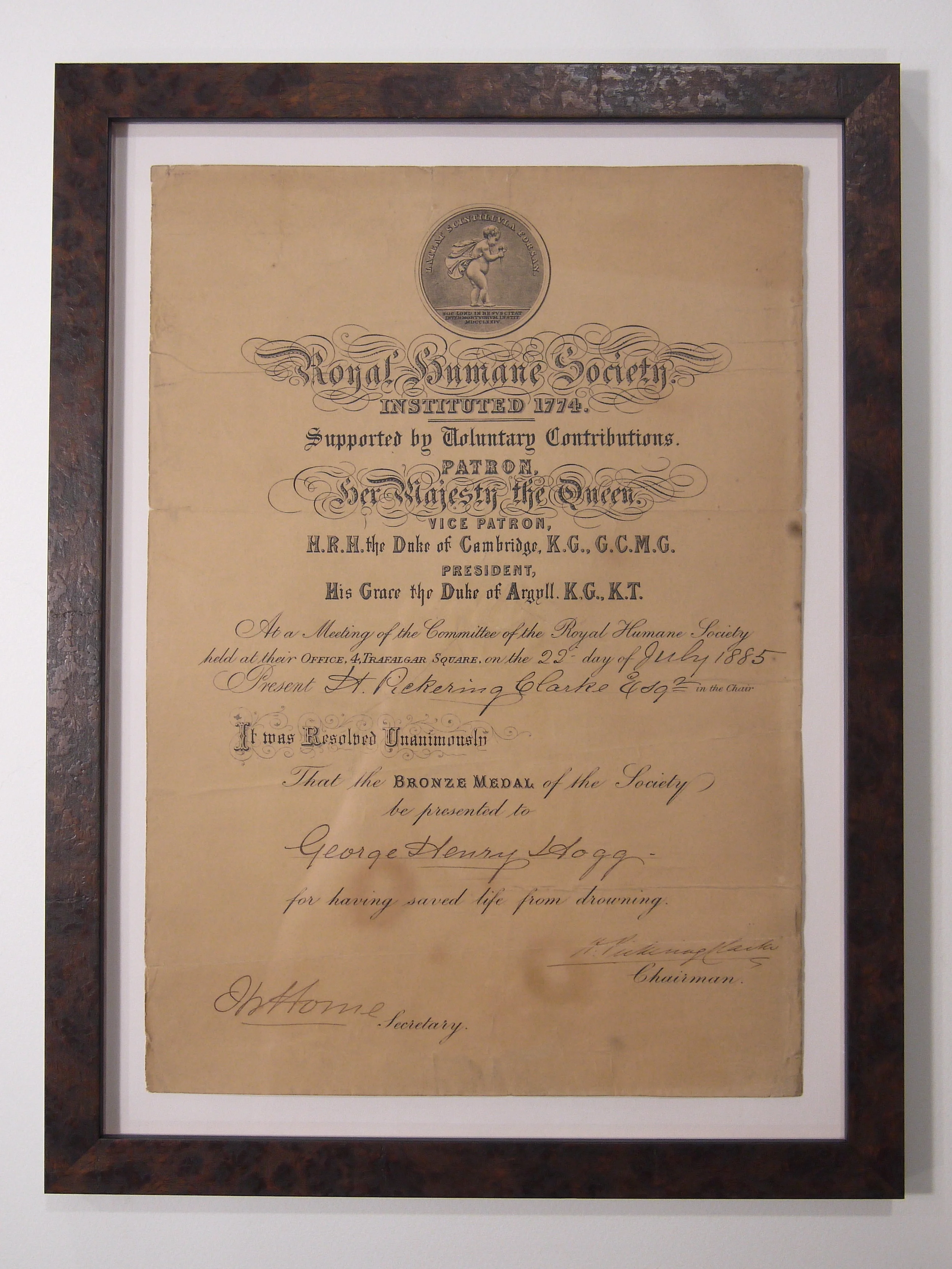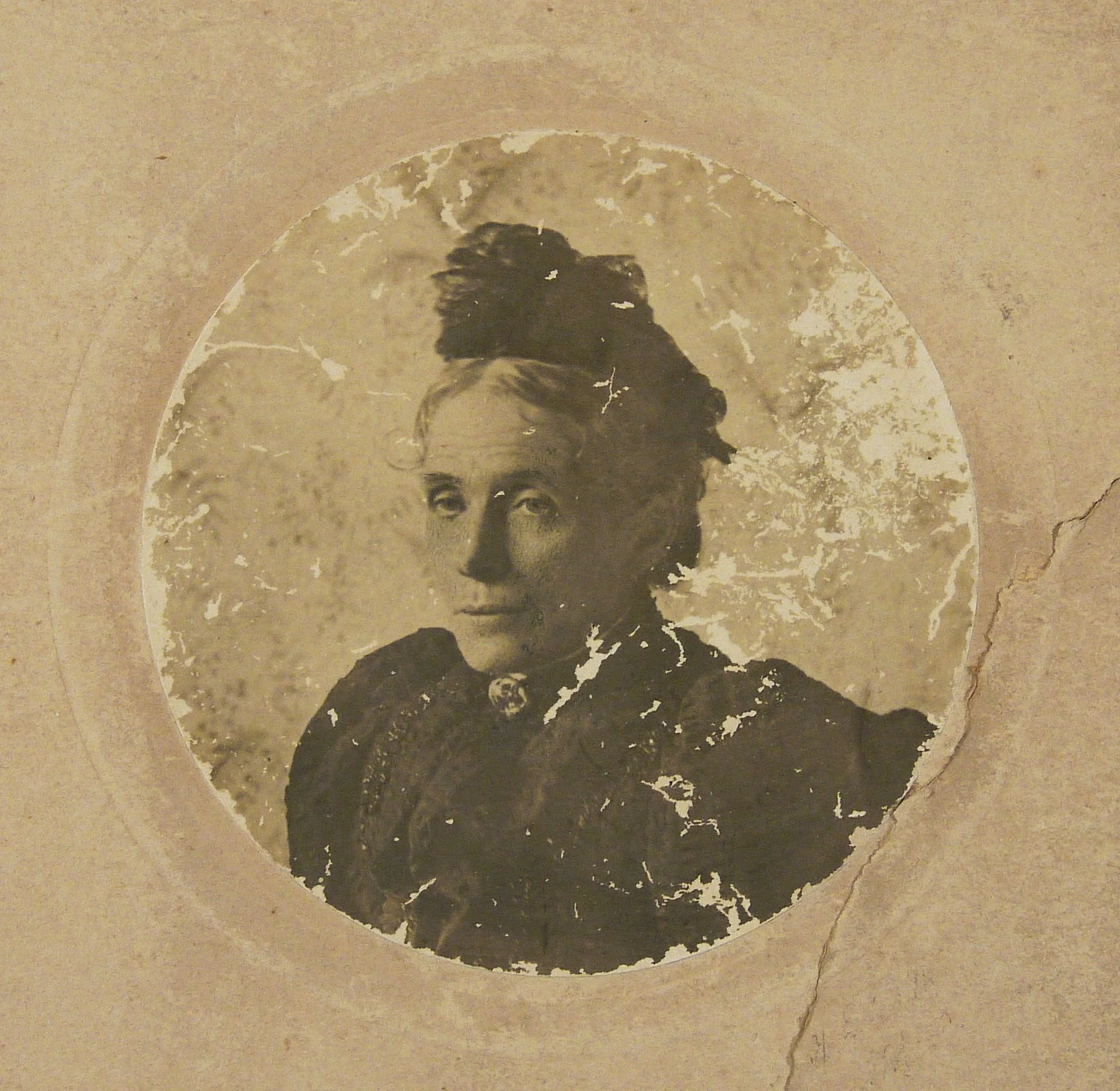Conservation & Restoration of Archival Materials
Click on the images to see in full screen
Livery Outfit, printed broadside, 1920.
This broadside poster on brittle paper had shattered along the fold lines and was broken into many pieces.
Livery Outfit, printed broadside, 1920.
The paper was repaired by lining onto Japanese paper and filling the losses.
This family heirloom had been stored rolled and folded, causing tears, breaks and creasing to the paper.
Repairs and flattening have restored the document, allowing it to be safely handled and displayed again.
This family heirloom - a hand-lettered pen and ink drawing of the Lord's Prayer, dated 1837 - was badly stained.
The drawing was washed and bleached to reduce the staining. The delicate penmanship can now be appreciated once more. See our blog section for more details about this treatment.
This map showed an uneven discolouration of the paper as well as a dark mat burn caused by acidic framing materials.
Washing and bleaching reduced the stains and discolouration so that the paper tone is now warm and even. With a new mat and frame, the map looks stunning.
This parchment land deed had been stored folded, causing strong creases and breaks along the folds. It was housed in a frame that was too small and did not properly support the wax seal.
Damages were repaired and it was flattened and mounted in a new mat, with a custom design to fit the wax seal below.
Bird's Eye View of London, Ontario, Canada, 1872
This 1872 lithographed map of London, Canada, was adhered to an acidic backer board, stained and yellowed, and suffered many breaks and losses to the paper.
Bird's Eye View of London, Ontario, Canada, 1872
The print was removed from it's acidic backer board, washed and light bleached, and lined with Japanese paper. Losses were inpainted to restore visual unity.
After conservation treatment, the paper tone is brighter and the image is viewable without distraction from damages. It is stabilized for the future.
Sarnia Canadian newspaper, 1916.
The newspaper was soiled and creased, with folds obscuring some of the text and images.
Sarnia Canadian newspaper, 1916.
Paper conservation treatment included surface cleaning, repairing tears, filling losses to the paper, and flattening. The newspaper is now readable.
This map was badly darkened in the area visible through an old acidic mat.
Washing and bleaching reduced the discolouration drastically, improving the appearance of the map.
This Bronze Medal Certificate from the Royal Humane Society, dated 1855, came to us disfigured by extensive tears and creases.
Conservation treatment at our studio restored the fragile document by mending the tears and flattening the creases. Conservation framing in archival materials and UV filtering glass allows it to be safely displayed.
This family photograph suffered a break in the board and scratches in the emulsion.
The board was repaired and losses in the photograph were inpainted to restore the unity of the image.
A VARIETY OF Archival materials
CAN BE conserved AT OUR STUDIO:
Antique maps, both printed and hand drawn.
Documents such as letters, marriage or birth certificates, posters, broadsides, etc.
Parchment items, including land deeds, indentures or illuminated pages.
Photographs and other family heirlooms.
Architectural drawings, plans or sketches.
Conservation treatment can address various types of damages common to archival materials, including stains, tears and breaks, discolouration, brittleness, mould, and more. If your documents have suffered over time, we can repair and preserve them for your family to enjoy for many more generations.
Contact us if you are interested in discussing restoration of your archival materials.
